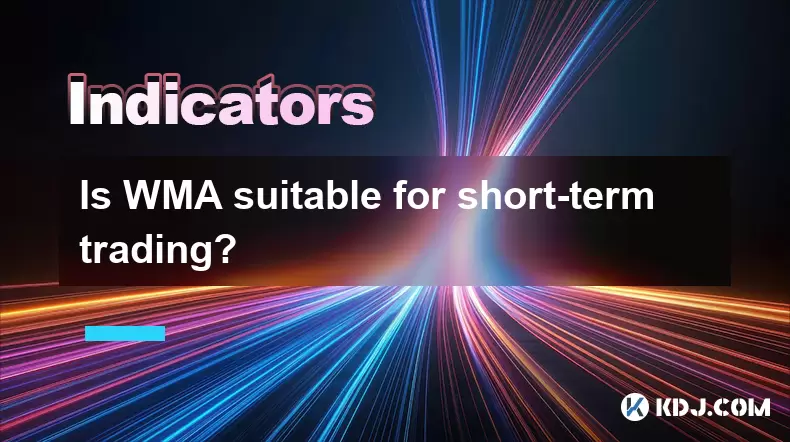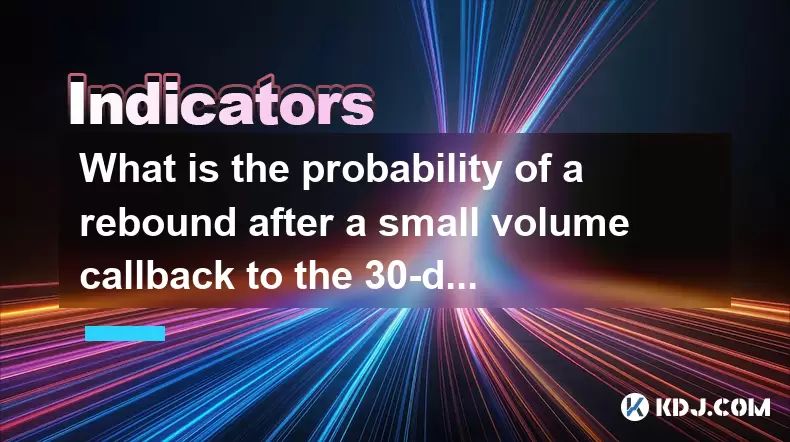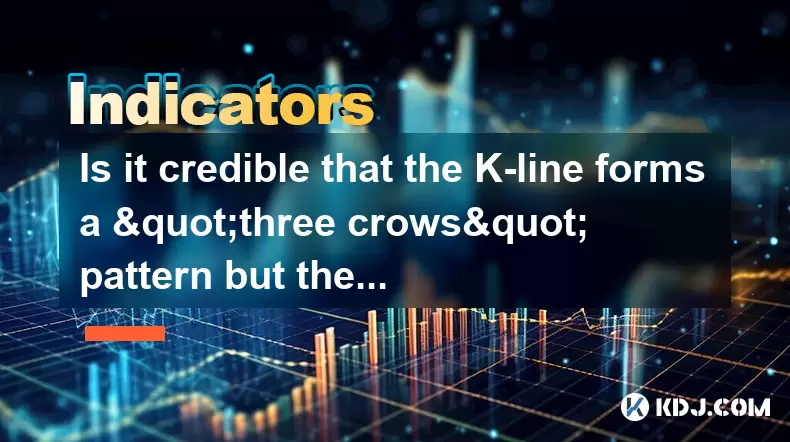-
 Bitcoin
Bitcoin $105,290.4279
4.46% -
 Ethereum
Ethereum $2,407.4233
7.73% -
 Tether USDt
Tether USDt $1.0007
0.02% -
 XRP
XRP $2.1509
6.51% -
 BNB
BNB $640.4754
3.91% -
 Solana
Solana $143.8519
8.64% -
 USDC
USDC $0.9999
0.01% -
 TRON
TRON $0.2735
3.64% -
 Dogecoin
Dogecoin $0.1631
7.35% -
 Cardano
Cardano $0.5811
7.21% -
 Hyperliquid
Hyperliquid $37.4173
5.54% -
 Sui
Sui $2.7951
13.59% -
 Bitcoin Cash
Bitcoin Cash $462.0755
1.75% -
 Chainlink
Chainlink $12.8780
10.17% -
 UNUS SED LEO
UNUS SED LEO $9.1321
1.18% -
 Stellar
Stellar $0.2454
7.05% -
 Avalanche
Avalanche $18.0314
8.62% -
 Toncoin
Toncoin $2.9114
6.55% -
 Shiba Inu
Shiba Inu $0.0...01158
9.05% -
 Litecoin
Litecoin $85.0039
5.42% -
 Hedera
Hedera $0.1519
12.92% -
 Monero
Monero $312.0572
4.18% -
 Ethena USDe
Ethena USDe $1.0007
0.03% -
 Polkadot
Polkadot $3.4168
8.50% -
 Dai
Dai $1.0000
0.00% -
 Bitget Token
Bitget Token $4.1980
4.14% -
 Uniswap
Uniswap $6.8088
8.09% -
 Pepe
Pepe $0.0...09871
10.93% -
 Pi
Pi $0.5340
3.78% -
 Aave
Aave $255.3245
11.87%
Is WMA suitable for short-term trading?
WMA's responsiveness to recent prices makes it suitable for short-term crypto trading, but it may lead to false signals and higher transaction costs.
May 22, 2025 at 09:07 am

Is WMA suitable for short-term trading?
When considering the suitability of the Weighted Moving Average (WMA) for short-term trading within the cryptocurrency market, it's essential to delve into the specifics of how this technical indicator functions and its potential applications in trading strategies. The WMA is a type of moving average that assigns more weight to recent prices, making it more responsive to new information compared to the Simple Moving Average (SMA). This characteristic can be particularly appealing for traders looking to capitalize on short-term price movements in the volatile world of cryptocurrencies.
Understanding WMA and Its Calculation
The Weighted Moving Average is calculated by multiplying each price in the data set by a predetermined weight, which decreases linearly as you move further back in time. The sum of these products is then divided by the sum of the weights. This method gives more importance to recent prices, allowing the WMA to react more quickly to price changes than an SMA. For example, if you are calculating a 5-day WMA, the most recent day's price would be multiplied by 5, the second most recent by 4, and so on, down to the fifth day's price being multiplied by 1.
Advantages of Using WMA for Short-Term Trading
One of the primary advantages of using the WMA for short-term trading in cryptocurrencies is its ability to provide more timely signals. In the fast-paced crypto market, where prices can swing dramatically within minutes, having an indicator that reacts quickly to price changes can be a significant benefit. The WMA can help traders identify potential entry and exit points more rapidly than slower-moving averages, which is crucial for short-term trading strategies.
Additionally, the WMA can be particularly useful in trend confirmation. If a cryptocurrency's price is consistently above the WMA, it may indicate a bullish trend, suggesting a potential opportunity for short-term traders to buy. Conversely, if the price remains below the WMA, it could signal a bearish trend, prompting traders to consider selling or shorting the asset.
Potential Drawbacks of WMA in Short-Term Trading
While the WMA offers several benefits for short-term trading, it also comes with potential drawbacks. The increased sensitivity to recent price changes can lead to more false signals, especially in the highly volatile crypto market. Traders might find themselves entering or exiting positions based on short-term fluctuations that do not necessarily reflect the broader market trend. This risk of false signals requires traders to use additional indicators or analysis methods to confirm WMA signals.
Moreover, the WMA's responsiveness can also result in increased transaction costs. Since short-term traders using the WMA may enter and exit trades more frequently, they could incur higher fees and slippage, which can eat into their profits. Therefore, it's crucial for traders to consider the cost implications of their trading strategy.
Practical Application of WMA in Short-Term Trading
To effectively use the WMA for short-term trading in cryptocurrencies, traders should follow a systematic approach. Here’s how they can incorporate the WMA into their trading strategy:
- Choose the Right Timeframe: Select a timeframe that aligns with your trading goals. For short-term trading, shorter timeframes like 5-minute or 15-minute charts may be more suitable.
- Set the WMA Parameters: Decide on the number of periods for the WMA. A shorter period, such as a 10-day WMA, will be more responsive to price changes, while a longer period, like a 30-day WMA, will be less sensitive.
- Monitor Price Crosses: Watch for the price crossing above or below the WMA. A price moving above the WMA could signal a buying opportunity, while a price moving below it might suggest a selling opportunity.
- Confirm with Other Indicators: Use additional technical indicators, such as the Relative Strength Index (RSI) or the Moving Average Convergence Divergence (MACD), to confirm WMA signals and reduce the risk of false positives.
- Implement Risk Management: Set stop-loss orders and take-profit levels to manage risk. Given the WMA's sensitivity, it's important to have a clear exit strategy to protect against sudden market reversals.
Case Studies and Real-World Examples
To illustrate the practical application of the WMA in short-term trading, consider the following examples from the cryptocurrency market:
Bitcoin (BTC) Example: A trader monitoring a 15-minute chart of Bitcoin notices that the price has been consistently above a 10-day WMA. The trader enters a long position when the price briefly dips to the WMA and then rebounds. They use the RSI to confirm that Bitcoin is not overbought, and set a stop-loss just below the WMA to manage risk. The trade is successful as Bitcoin's price continues to rise, allowing the trader to exit with a profit.
Ethereum (ETH) Example: An Ethereum trader observes that the price has been trading below a 20-day WMA on a 5-minute chart. When the price briefly crosses above the WMA, the trader enters a short position, anticipating a return to the bearish trend. They use the MACD to confirm the bearish momentum and set a stop-loss just above the WMA. The trade pays off as Ethereum's price falls back below the WMA, enabling the trader to close the position with a profit.
WMA vs. Other Moving Averages for Short-Term Trading
When comparing the WMA to other moving averages like the SMA and the Exponential Moving Average (EMA), it's important to understand their differences and how they might suit different trading styles. The SMA gives equal weight to all prices within the period, making it less responsive to recent price changes. This can be beneficial for traders looking for more stable signals but may not be ideal for short-term trading in the crypto market.
The EMA, on the other hand, also gives more weight to recent prices but uses a different weighting method than the WMA. The EMA's formula results in a smoother curve than the WMA, which might be preferable for some traders. However, the WMA's linear weighting can provide clearer signals in certain market conditions, making it a viable choice for short-term trading.
Considerations for Using WMA in Different Market Conditions
The effectiveness of the WMA in short-term trading can vary depending on market conditions. In trending markets, the WMA can be particularly useful for identifying the direction of the trend and potential entry and exit points. Traders can use the WMA to follow the trend, entering long positions when the price is above the WMA and short positions when it's below.
In sideways or choppy markets, the WMA's sensitivity to price changes can lead to more false signals. Traders might need to adjust the WMA period or combine it with other indicators to filter out noise and improve the accuracy of their signals. For example, using a longer WMA period or incorporating a trend filter like the Average Directional Index (ADX) can help traders navigate choppy conditions more effectively.
FAQs
Q: Can WMA be used in conjunction with other indicators for short-term trading?
A: Yes, the WMA can be effectively combined with other technical indicators to enhance trading strategies. For instance, using the WMA alongside the RSI or MACD can help confirm signals and reduce the risk of false positives. Traders can set up their trading platforms to display multiple indicators, allowing them to cross-reference signals before making trading decisions.
Q: How do I choose the right WMA period for short-term trading?
A: The choice of WMA period depends on the trader's specific goals and the cryptocurrency's volatility. For short-term trading, periods between 5 and 20 days are commonly used. Shorter periods, like a 5-day WMA, will be more sensitive to price changes, which can be advantageous in highly volatile markets. Longer periods, such as a 20-day WMA, may provide more stable signals but could lag behind rapid price movements.
Q: What are the risks of using WMA for short-term trading in cryptocurrencies?
A: The main risks include increased false signals due to the WMA's sensitivity to recent price changes and higher transaction costs from frequent trading. Additionally, the fast-paced nature of the crypto market can lead to significant slippage, where the executed price differs from the expected price. Traders should use risk management techniques, such as stop-loss orders, to mitigate these risks.
Q: Can WMA be used for both long and short positions in short-term trading?
A: Yes, the WMA can be used to identify both buying and selling opportunities in short-term trading. When the price crosses above the WMA, it may signal a buying opportunity, suggesting a potential long position. Conversely, when the price crosses below the WMA, it could indicate a selling opportunity, prompting traders to consider a short position. Traders should always confirm these signals with additional analysis to increase the likelihood of successful trades.
Disclaimer:info@kdj.com
The information provided is not trading advice. kdj.com does not assume any responsibility for any investments made based on the information provided in this article. Cryptocurrencies are highly volatile and it is highly recommended that you invest with caution after thorough research!
If you believe that the content used on this website infringes your copyright, please contact us immediately (info@kdj.com) and we will delete it promptly.
- Circle's Stablecoin Soars: A $62 Billion Power Play
- 2025-06-24 06:25:12
- Ruvi AI: Is It Really Poised to Eclipse Tron and Other Crypto Giants?
- 2025-06-24 07:05:12
- Neo Pepe Coin: The Meme Token Taking Over Crypto Presales
- 2025-06-24 06:45:12
- Solana, Pepe, and Crypto Risk: Navigating the Meme Coin Mania
- 2025-06-24 07:05:12
- COIN Act: Curbing Crypto Profiteering by Public Officials – A Necessary Step?
- 2025-06-24 06:25:12
- Ethereum Whales Accumulate: Smart Money Betting on ETH Rebound?
- 2025-06-24 07:25:16
Related knowledge

What does the continuous rise of the ADX line of the DMI indicator in the downward trend indicate?
Jun 24,2025 at 05:00am
Understanding the DMI Indicator and Its ComponentsThe Directional Movement Index (DMI) is a technical analysis tool that helps traders identify the strength and direction of a trend. It consists of two primary components: the +DI (Positive Directional Indicator) and the -DI (Negative Directional Indicator). The ADX line, which stands for Average Directi...

What is the probability of a rebound after a small volume callback to the 30-day moving average to get support?
Jun 24,2025 at 05:08am
Understanding the 30-Day Moving Average in Cryptocurrency TradingIn cryptocurrency trading, the 30-day moving average (MA) is a widely used technical indicator that helps traders identify potential support and resistance levels. It calculates the average closing price of an asset over the last 30 days, smoothing out short-term volatility and providing a...

How to interpret that the time-sharing chart shows "volume and price rise together" but the MACD red column shortens?
Jun 24,2025 at 01:08am
Understanding the Concept of 'Volume and Price Rise Together'In cryptocurrency trading, when a time-sharing chart shows that both volume and price rise together, it is typically interpreted as a sign of strong buying pressure. This means more traders are entering long positions, pushing the price higher while increasing the trading volume. This phenomen...

Is it contradictory that the moving average system is arranged in a bullish pattern but the DMI shows a decline in trend strength?
Jun 23,2025 at 11:43pm
Understanding the Moving Average and DMI RelationshipIn cryptocurrency trading, technical analysis plays a crucial role in identifying potential trends and making informed decisions. Two of the most commonly used indicators are the Moving Average (MA) and the Directional Movement Index (DMI). While both tools aim to provide insight into market direction...

How to interpret that the Williams indicator quickly turns back in the overbought area but does not fall below the 50-axis?
Jun 24,2025 at 02:01am
Understanding the Williams %R Indicator in Cryptocurrency TradingThe Williams %R indicator, often referred to as Williams Percent Range, is a momentum oscillator used by traders to identify overbought or oversold conditions in financial markets, including cryptocurrency. It ranges from 0 to -100, where values above -20 are considered overbought and thos...

Is it credible that the K-line forms a "three crows" pattern but the trading volume decreases?
Jun 24,2025 at 05:56am
Understanding the 'Three Crows' Pattern in Cryptocurrency TradingThe three crows pattern is a well-known bearish reversal signal in technical analysis, often observed when an uptrend transitions into a potential downtrend. This formation consists of three consecutive long red (or bearish) candles with each opening within the body of the previous candle ...

What does the continuous rise of the ADX line of the DMI indicator in the downward trend indicate?
Jun 24,2025 at 05:00am
Understanding the DMI Indicator and Its ComponentsThe Directional Movement Index (DMI) is a technical analysis tool that helps traders identify the strength and direction of a trend. It consists of two primary components: the +DI (Positive Directional Indicator) and the -DI (Negative Directional Indicator). The ADX line, which stands for Average Directi...

What is the probability of a rebound after a small volume callback to the 30-day moving average to get support?
Jun 24,2025 at 05:08am
Understanding the 30-Day Moving Average in Cryptocurrency TradingIn cryptocurrency trading, the 30-day moving average (MA) is a widely used technical indicator that helps traders identify potential support and resistance levels. It calculates the average closing price of an asset over the last 30 days, smoothing out short-term volatility and providing a...

How to interpret that the time-sharing chart shows "volume and price rise together" but the MACD red column shortens?
Jun 24,2025 at 01:08am
Understanding the Concept of 'Volume and Price Rise Together'In cryptocurrency trading, when a time-sharing chart shows that both volume and price rise together, it is typically interpreted as a sign of strong buying pressure. This means more traders are entering long positions, pushing the price higher while increasing the trading volume. This phenomen...

Is it contradictory that the moving average system is arranged in a bullish pattern but the DMI shows a decline in trend strength?
Jun 23,2025 at 11:43pm
Understanding the Moving Average and DMI RelationshipIn cryptocurrency trading, technical analysis plays a crucial role in identifying potential trends and making informed decisions. Two of the most commonly used indicators are the Moving Average (MA) and the Directional Movement Index (DMI). While both tools aim to provide insight into market direction...

How to interpret that the Williams indicator quickly turns back in the overbought area but does not fall below the 50-axis?
Jun 24,2025 at 02:01am
Understanding the Williams %R Indicator in Cryptocurrency TradingThe Williams %R indicator, often referred to as Williams Percent Range, is a momentum oscillator used by traders to identify overbought or oversold conditions in financial markets, including cryptocurrency. It ranges from 0 to -100, where values above -20 are considered overbought and thos...

Is it credible that the K-line forms a "three crows" pattern but the trading volume decreases?
Jun 24,2025 at 05:56am
Understanding the 'Three Crows' Pattern in Cryptocurrency TradingThe three crows pattern is a well-known bearish reversal signal in technical analysis, often observed when an uptrend transitions into a potential downtrend. This formation consists of three consecutive long red (or bearish) candles with each opening within the body of the previous candle ...
See all articles
























































































